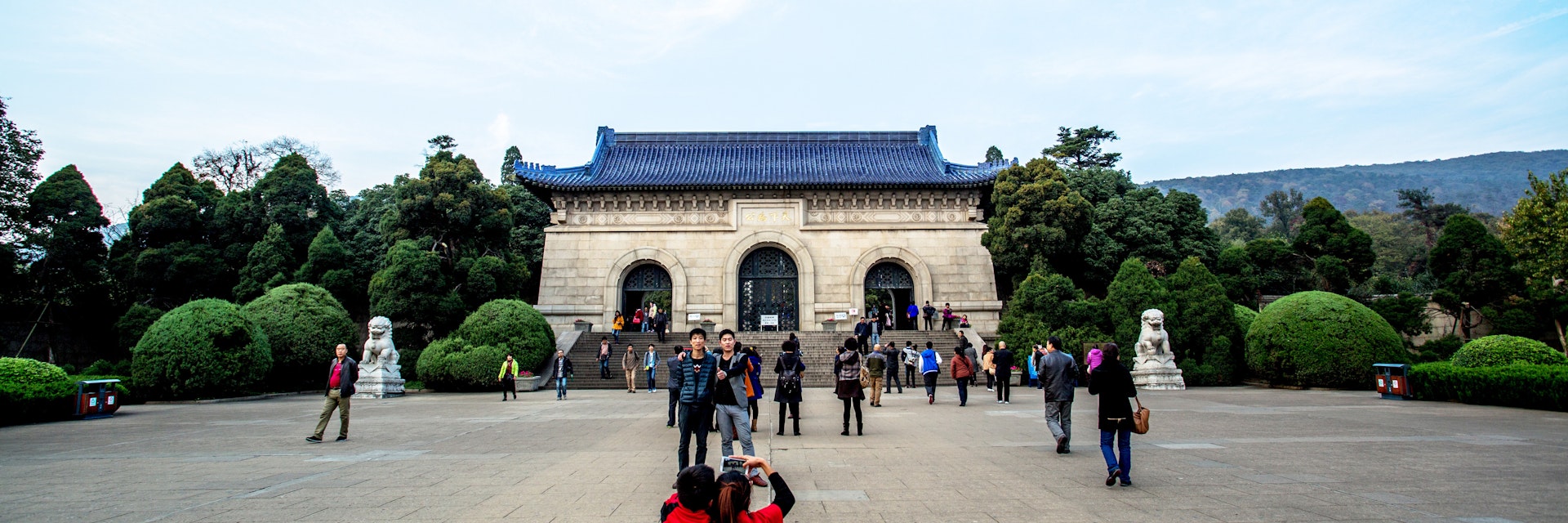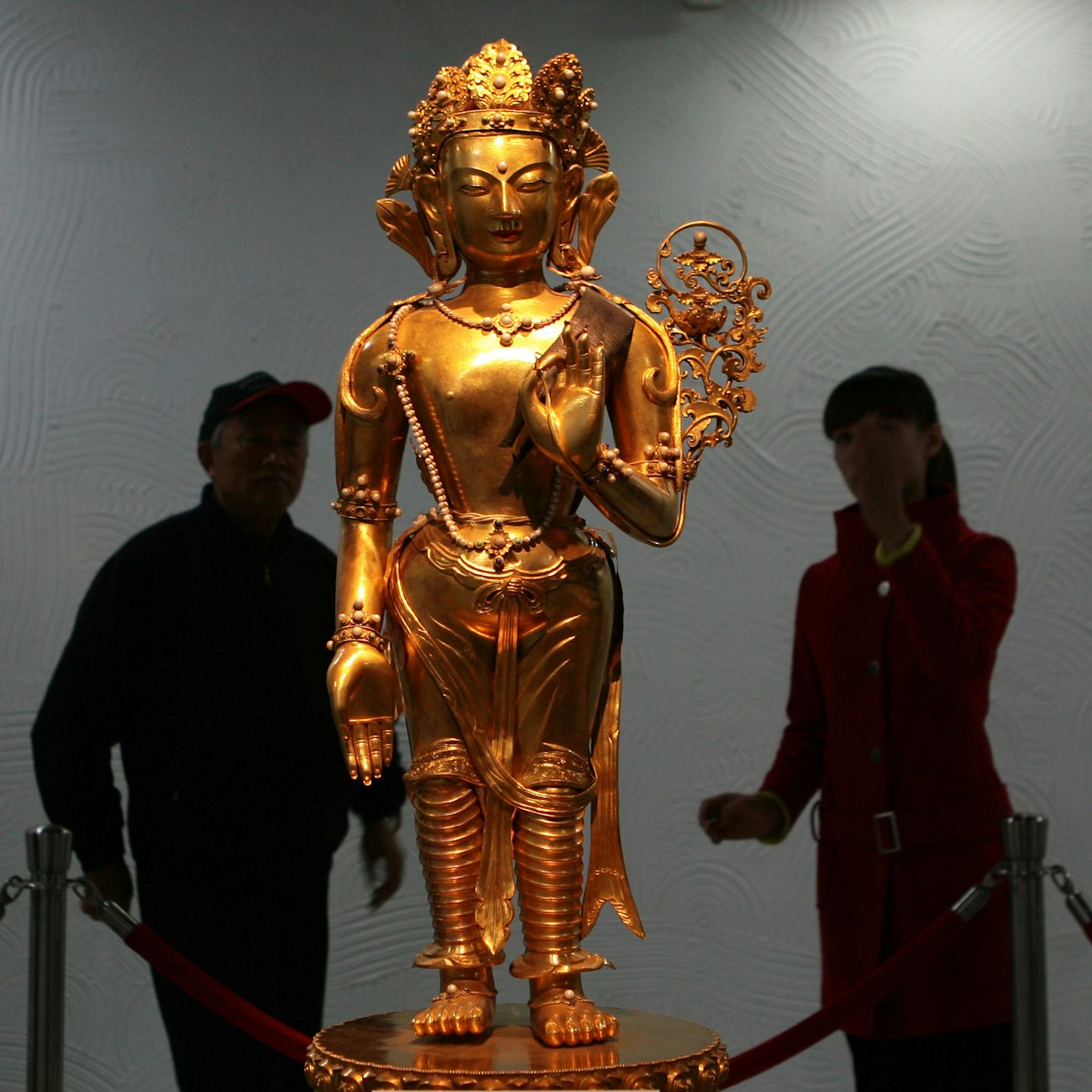An astonishing sight at the top of an enormous stone stairway (a breathless 392 steps), Sun Yatsen's tomb is a mandatory stop for most visitors. Reverentially referred to as guófù (国父, Father of the Nation), Dr Sun is esteemed by both communists and Kuomintang. He died in Beijing in 1925, and had wished to be buried in Nanjing, no doubt with far less pomp than the Ming-style tomb his successors fashioned for him. Within a year of his death, however, construction of this mausoleum began.
Admission is ticketed; bring your passport to collect a free ticket.
At the start of the path stands a dignified marble gateway, capped with a roof of blue-glazed tiles. The blue and white of the mausoleum symbolises the white sun on the blue background of the Kuomintang flag; the flag also appears in mosaic on the ceiling of the mausoleum itself.
Halfway up the grand ascent, don't miss the pair of hefty bronze tripods that bear bullet holes from the Japanese invasion in 1937.
The memorial chamber and crypt lie at the top of the steps. A tablet hanging across the threshold is inscribed with the ‘Three Principles of the People’, as formulated by Dr Sun: nationalism, democracy and people’s livelihood. Inside is a statue of a seated Dr Sun (who is better known to the Chinese as Sun Zhongshan, rather than Sun Yatsen), while a supine marble statue of Dr Sun seals his copper coffin.
Shuttle buses (¥10, some resembling red steam trains) speed to and from the Linggu Temple Scenic Area.




